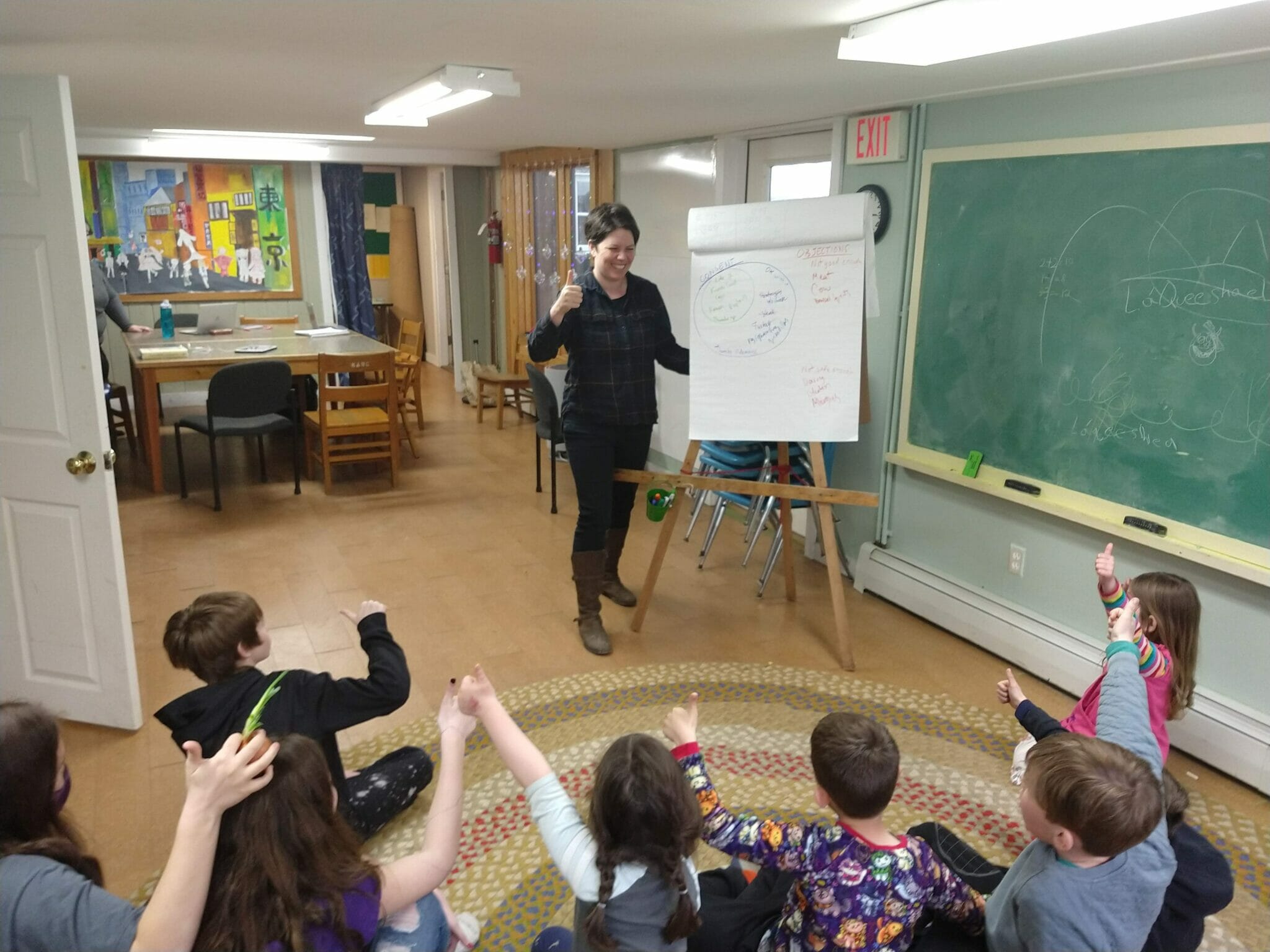
Conflict in a Sociocratic School + Restorative Justice: Some Lessons
“I don’t feel seen or heard. I’m leaving.”

These words, spoken by a member of the school I founded using sociocracy, felt like a gut punch. I felt like we had done everything we could to prepare for conflict. But when conflict suddenly arose, I realized that we hadn’t done enough. In writing this article, I hope that others can learn from our painful mistakes.
Conflict is hard, can lead to rifts in relationships, and also make an organization crash and burn. It can be all too easy to push disagreements under the rug, ignore intense feelings in order to keep going with running the business and accomplishing the goals of an organization. This can look like it is “working” in the near term which may lead to it simply bubbling up longer term. I feel it is necessary to lean into processing conflict head on by communicating clearly and openly about it.
Learning from our mistakes on the conflict in this sociocratic school

At Pathfinder Community School, we used sociocracy with the founding group from the very start. Once children were enrolled, we used the principles with them. We gradually built up to a circle structure that included staff and parents over several years of practice. The parents were the last to join, and there was a steep learning curve to the process. The intention was to offer trainings to help empower parents. But instead, people felt lost and confused, and disempowered as they didn’t know how to navigate the process. They felt that sociocracy was being imposed from above without their consent. Parents felt their voices were not being heard, which was the exact opposite of the intention of fully implementing sociocratic circles.
Lack of consent to processes
The first mistake that we made was the lack of consent from parents and staff members about using sociocracy. Likewise, we also had no agreements about how to proceed in the case of conflict in such a situation. There was no system in place to address conflict that inevitably arose.
Lack of feedback
The second mistake was plowing ahead with several top-down training initiatives without getting feedback from the community. As the director, I thought that our organization desperately needed the training. It turned out that not getting feedback and buy-in from the community was a huge mistake.
Avoiding hot topics

Thirdly, we didn’t do enough to address hot topics head on with listening and feedback sessions. At the same time, we were implementing sociocracy with the parents for the first time with the explicit purpose of including parents in decision making processes. We went too fast for people to keep up. The learning curve for participation was too steep for some to feel comfortable using the process. Others were simply more comfortable with talking informally, around the campfire, and they would ask, “Why can’t we just talk this out instead of all these formal meetings?”
The main conflict: a deep shift in values
The main conflict that arose during this confusion about process was a deep shift in values. There was a budget presentation to the parents to help with transparency about the cost of running the school, and to help motivate initiatives to fundraise and increase membership. A large group of parents wanted to change the business model of the organization, to decrease cost. They objected to paying the staff higher wages, saying that parent volunteers could do the same job for free. Additionally, there was significant conflict over a racial equity training which was offered without first asking the community if it was wanted, again there were objections about the cost.
The parents weren’t clear on the process and directly complained to the board rather than using the sociocratic process. The board replied with a strong commitment to paying a living wage, and to sticking to the business model of hiring staff rather than relying on volunteers. It seemed there was no way to meet in the middle.
The result of these conflicts in this sociocratic school was that a large portion of our community left, with a feeling of ill will. Despite the best of intentions on all sides, there were mounting miscommunications that snowballed into a deep rift.
We used restorative circles on a daily basis with the children to resolve conflict successfully. I wish that we had been practicing them with the adults all along.
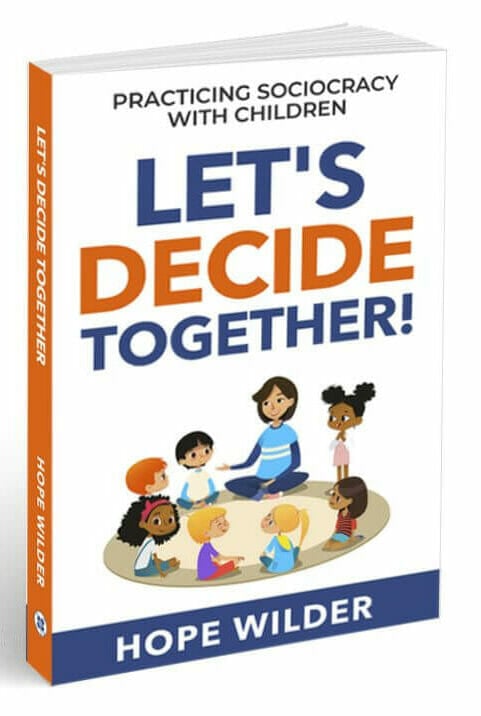
What is a restorative circle?
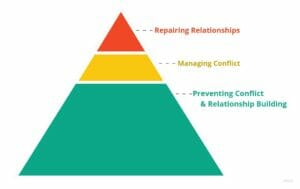
Restorative justice is a relational approach to conflict. Restorative Justice seeks to answer the question, how do we create the space for accountability and simultaneously build relationships? (National Center for Restorative Justice)
After a community agreement has been breached, or interpersonal conflict has not been resolved through another process, a restorative circle can be called. The purpose of the circle is to repair relationships, and to repair harm done to trust or the community.

Here is one process for a restorative circle:
- The facilitator talks with all involved parties, and tries to establish:
- What happened?
- What were you thinking or feeling at the time?
- What do you need to make it better?
- How would you like things to be different in the future?
- What request do you have for the other person?
- The parties are brought together and speak in rounds, answering all of the questions. Members representing the community are present, and they contribute to the questions, “What needs to happen to make this better, right now?” and “How would you like things to be different in the future?
- The parties involved may write and sign an agreement for what happens in the future. Any immediate steps are taken—for example, an apology, or a restorative action such as repairing a damaged building, or other service to the community.
What happened next, and what we could have done better on this conflict in a sociocratic school

In the middle of the school-wide conflict, the board consented to hiring outside mediators to do a listening circle using the same restorative conflict resolution philosophy that we use with the children. The trainers interviewed the staff and set the stage for the circle. Tragically, before we could meet, another conflict arose between the aggrieved parties that proved to be the final straw. After the families left, the rest of the community was in shock. These families had been a part of the school from the very beginning, and the parents and children were integral parts of the community. Their leaving was a massive loss, and we were all grieving.
We proceeded with the restorative circle, and long-hidden feelings arose to the surface as we passed the talking object. The process was lengthy and emotional. There was some healing to be found as the story of what had happened was explained from many different sides. Then we explored how everyone felt about what had happened. Unfortunately, before we could get into what would happen next and how the breach could be repaired within the community, COVID intervened and the school eventually went into hibernation without completing the process.
Even though we knew about restorative justice, I wish we had implemented it more thoroughly, and with consent from the parents and staff to specific conflict resolution practices
“The children were much better in resolving conflict in general than the adults.”
Our restorative justice based conflict resolution system
The school did do a good job in that we built in conflict processes from the beginning for the children as a part of the vision for the school. As a result, the children were much better in resolving conflict in general than the adults. We dealt with conflicts from playground arguments, to name-calling, and long-term bullying. The relationship of two children who started as victim and bully evolved into a best friendship through using our conflict processes.
What were our agreements with the children?
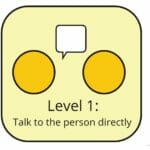
Level 1. Go tell the person what happened, how you feel about it, and what you request in the future. (Nonviolent Communication Template)
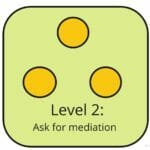
Level 2. If that fails, ask for mediation walking through the same questions with both parties. (Example form for Level 1 and 2)
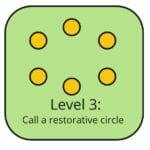
Level 3. Call a restorative circle with members of the community, and ask the same questions. The community can reflect on what could make it better, and if policy needs to change to help it be different next time. (Example form for Level 3)
If someone’s action affected the community at large, for example writing graffiti on the wall, or repeatedly breaking a community agreement, the process would automatically go to level 3.
So, conflict processes and restorative circles can be an important addition to an organization using sociocracy, and the members of the organization need to consent to any processes. At our school, the children agreeing to conflict processes was part of signing up to join the school.
In the conflict with the parents, I believe these steps could have helped. The parents could have started with going directly to the staff involved. We could then have called for mediation with an external mediator, and if that failed, we could have escalated to a restorative circle. I also believe that if the staff had asked for feedback earlier and more often about policy changes, the parents might have felt more empowered and included in the process.
Tips and lessons learned on the conflict in a sociocratic school
Conflict resolution processes
- What are the conflict processes in your organization?
- Are they clear, and consented to?
- What happens when we break agreements?
- Do you have conflict resolution processes for all of the levels of your organization, ex: including the board as well as staff?
- Consent to conflict processes before conflict builds up!
- Once you have clear agreements around conflict, post them in public places for transparency, and to make sure everyone understands expectations and community procedures.
Know when to ask for help
- Training in nonviolent communication, mediation, active listening, and restorative circles will reap big dividends in terms of creating clarity and trust around conflict.
- Outside training from experts can create more buy-in from community members rather than internal members pushing for change.
- If a conflict is organization-wide, or deeply creating a rift in your community, get an outside facilitator to mediate the conflict as soon as possible. A circle involving the whole community can be deeply healing.

In conclusion: A restorative mindset on the conflict in a sociocratic school

I hope you can learn from our mistakes. I believe that if the people in the organization have shared values of connection, collaboration, and empathy, and are willing to put in the time and effort to repair relationships, adopting these practices can be effective. The mindset and values behind using the tools themselves will help the process along, as well as the ability to get up when you get knocked down and to keep going.
I hope that you can see that restorative circles and conflict resolution in a sociocratic school can be integrated as a valuable adjunct to sociocracy. Best of luck increasing connection and building a more restorative community!
References: National Institute for Restorative Justice
Did you enjoy this article? You might also be interested in Conflict resolution in schools by consent and NVC consciousness, a presentation by Magdalena Sendor from SoFA’s 2021 conference.
Or check out our Non-Violent Communication classes to learn more about conflict resolution.
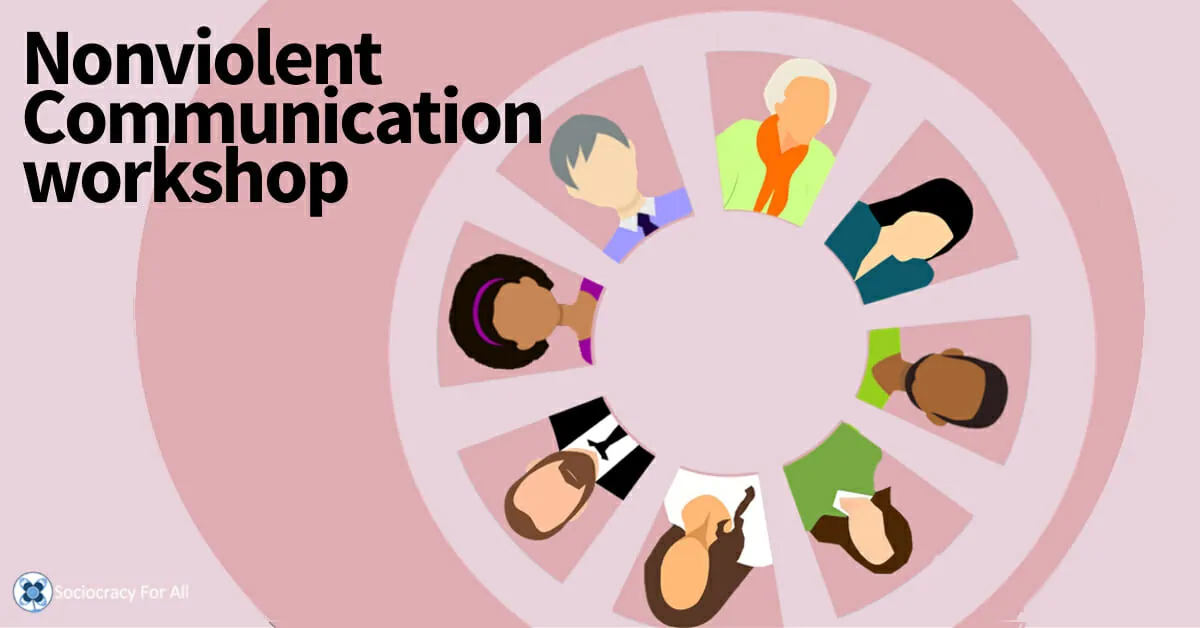


Leave a Reply
You must be logged in to post a comment.